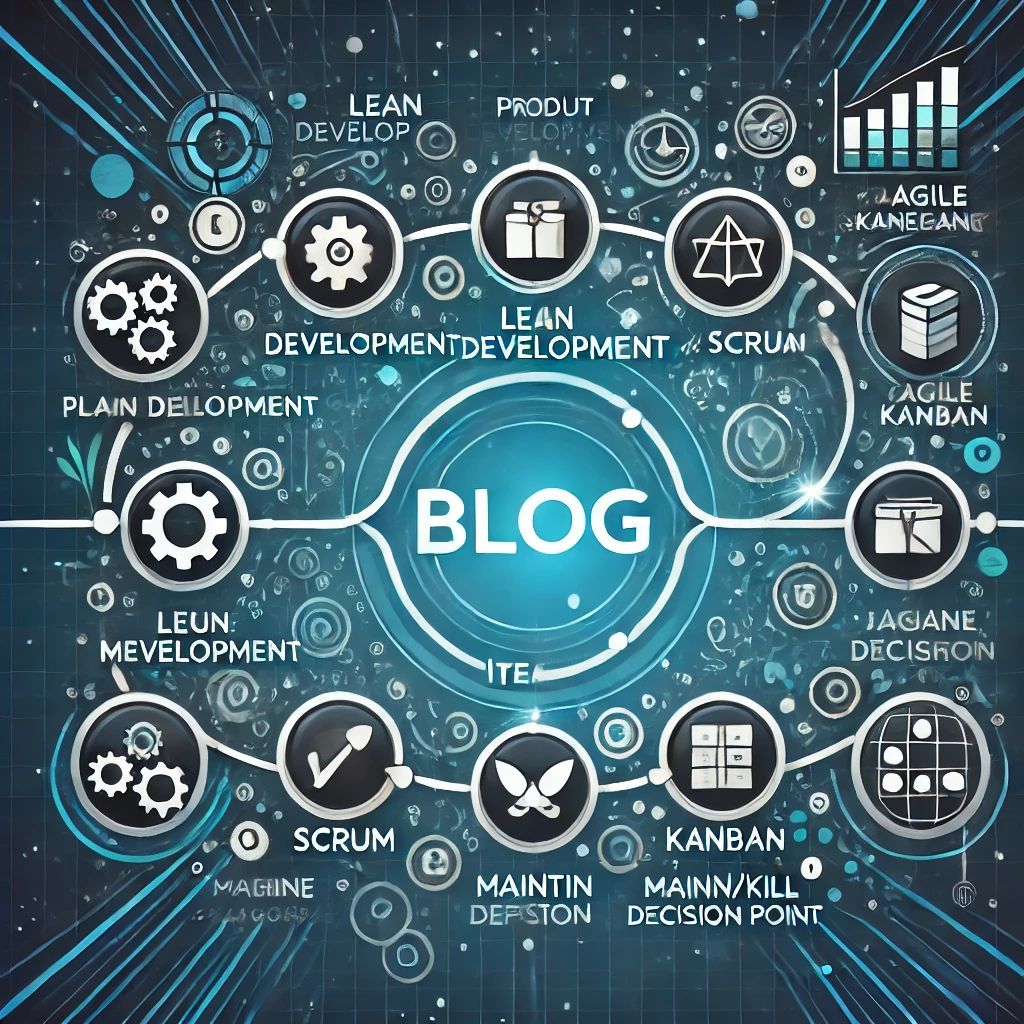Fundamentals

Introduction
In the ever-evolving world of software development, the role of a product manager is crucial to ensure a product's success, from the initial concept to the final sunset stage. Product managers act as the bridge between the customer, development team, and business goals. In this guide, we’ll explore some of the key concepts, methodologies, and philosophies that every product manager should understand to succeed in their role.
Whether you're managing a digital product, physical product, or a service, these fundamentals will guide your decision-making process and improve your team's efficiency.
Lean Product Development
Lean product development is about building something intelligently. It focuses on minimizing waste, using fewer resources, and delivering value faster. This principle applies across industries—not just software.
The core idea is to avoid over-investing in unnecessary features or processes that don't directly contribute to solving a customer's problem. Lean product development emphasizes early feedback, quick iteration, and efficiency to avoid costly errors.
How Lean Product Development Works:
- Build only what is necessary and of value to the customer.
- Continuously improve processes to reduce waste.
- Validate ideas early with real users to avoid building the wrong thing.
Agile
Agile is a project management framework tailored specifically for software development, with its roots in lean thinking. Agile focuses on delivering products in an iterative and incremental way, allowing teams to adapt based on feedback and changing priorities.
Agile works by breaking down large projects into smaller tasks. Each task is addressed in order of importance, so that teams can deliver functioning pieces of the product faster and with fewer risks.
How Agile Works:
- Prioritize features or tasks based on business goals or customer needs.
- Develop in short cycles or "sprints," which typically last 1-2 weeks.
- Test the product during each cycle, gather feedback, and refine the product for the next iteration.
By using Agile, product teams can pivot when necessary and deliver value to customers earlier, even as the full product evolves.
Scrum & Kanban: Agile Frameworks
Two of the most popular agile frameworks are Scrum and Kanban. These frameworks provide practical structures to implement agile methodologies.
Scrum
Scrum is the most widely adopted Agile framework. It organizes the product development process into sprints, typically lasting two to four weeks. Each sprint focuses on a specific set of tasks from the backlog, and the team meets regularly to ensure everything stays on track.
How to Implement Scrum:
- Sprint Planning: At the start of each sprint, the team identifies which features or tasks they will tackle based on priority and capacity.
- Daily Stand-ups: Quick, daily meetings where team members share what they worked on, what they will work on, and any blockers.
- Using Tickets: Tasks are represented as tickets in a project management tool (like Jira or Trello) and move from "To Do" to "Done" as they progress.
- Sprint Review & Retrospective: At the end of the sprint, the team discusses what went well, what didn't, and areas for improvement.
By breaking work into smaller, manageable sprints, Scrum helps teams stay focused and aligned.
Kanban
Kanban is a more flexible Agile framework that focuses on workflow visualization and continuous delivery. It doesn’t rely on sprints but instead emphasizes limiting the number of tasks in progress at any one time. Kanban works with a Kanban board (visual board), where tasks move from “To Do” to “In Progress” to “Done.”
Key Elements of Kanban:
- Kanban Board: A visual tool (often digital) that helps teams manage their work items through columns like To Do, In Progress, and Done.
- WIP Limits: Unlike Scrum, Kanban limits the number of tasks that can be in progress at any given time, helping to avoid overloading the team and encouraging focus.
Comparison of Scrum & Kanban:
- Scrum: Structured, sprint-based, with fixed roles and responsibilities.
- Kanban: More flexible, continuous delivery without fixed timeframes or strict roles.
Which is Best?
There is no definitive answer for which is better between Scrum and Kanban—it depends on the project and team. Scrum works best in environments where structured roles and time-bound sprints are ideal. Kanban shines in situations where flexibility is needed, or tasks arrive on a rolling basis.
Waterfall
The Waterfall model is an older, linear approach to product development. In Waterfall, tasks are completed in sequential order—meaning each stage must be finished before the next one begins.
Waterfall Process:
- Requirements gathering
- Design
- Implementation
- Verification
- Maintenance
While Waterfall provides clarity and structure, it is often too rigid for today's fast-paced development needs. Its main drawback is that changes are difficult to accommodate once the process is underway. This can be risky—if a competitor releases a similar feature while you’re locked into long-term development, you may be stuck while they move faster.
Real-World Example of Waterfall Risk:
Consider a company developing a new software product with features that take a year to complete. Midway through the year, a competitor releases a similar product with some of those features. The rigid nature of Waterfall means the original company cannot pivot quickly enough to remain competitive.
Conclusion
The fundamentals of product management revolve around choosing the right process and methodology to fit your project’s needs. Lean development ensures you work intelligently by minimizing waste. Agile empowers teams to iterate quickly, while Scrum and Kanban provide practical ways to implement Agile in different environments. Although Waterfall offers structure, it comes with risks in fast-moving industries.
Ultimately, the key is flexibility. As a product manager, you must assess the specific needs of your team, the product, and the market, then choose the most suitable approach. Staying adaptable in a dynamic market is crucial to ensuring long-term product success.
With these methodologies and frameworks in mind, you’ll be better equipped to guide your product through its development lifecycle, ensuring it aligns with market demands and evolves with changing trends.